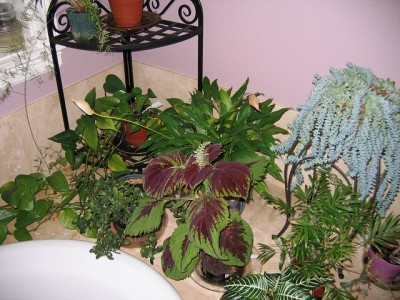






Before you bring new houseplants into your home, they probably spent weeks or even months in a warm, humid greenhouse. Compared to a greenhouse environment, the conditions inside most homes are quite dry, especially in winter when the furnace is running. For this reason, it is important that you learn and practice appropriate humidity houseplant care to ensure the longevity and health of your beloved plants.
Indoor plants need humidity levels between 40 and 60 percent, and suffer from stress when the humidity for houseplants is outside that range. If you don’t have a hygrometer to measure the humidity inside your home, watch your houseplants for signs of stress.
Consider raising humidity levels when your houseplants exhibit these symptoms:
Increasing humidity levels in the home is not difficult and will prove beneficial in the long run. Misting plants, growing them in groups and using water-filled pebble trays are the most popular methods for raising humidity.
Misting plants with a fine spray of water raises the humidity around the plant, but the effect is temporary. You should not mist plants with hairy leaves, such as African violets, however. The “hair” on the leaves holds water in place, encouraging diseases and leaving unsightly spots on the foliage.
Placing houseplants in groups not only looks terrific from a design perspective, but it also creates a pocket of humidity. You can increase the humidity even more by placing a dish of water in the center of the cluster. Keep a container of water nearby to make it easy to replenish the water in the dish.
Another way of increasing humidity levels around your plants is to set them on a tray of pebbles and water. Place a layer of pebbles in the tray, and then add water until the pebbles aren’t quite covered. The pebbles hold the plant above the water so that the roots don’t become waterlogged. As the water in the tray evaporates, it increases the moisture in the air around the plant.
Rooms where you use a lot of water are often very humid. If a plant in a kitchen, bathroom or laundry room shows symptoms of stress from high humidity, move it to another part of the house. On the other hand, plants that show symptoms of low humidity will benefit from spending some time in the humid parts of your house.
Most houseplants originate from humid jungle environments, and moisture in the air is essential for their health. You’ll be surprised at the way your plant will respond to adjustments in humidity, and you’ll have the satisfaction of enjoying lush, thriving plants.
Copyright © www.100flowers.win Botanic Garden All Rights Reserved